Since his appointment in December 2019, Ian Holloway has taken Grimsby Town from possible relegation to 11 points off the Sky Bet League Two Play-offs. The two-time promotion winner to the Premier League is no stranger to the limelight with his off the wall interviews and analysis with Sky Sports. Those who were concerned that his fruitful days were behind him are being proven wrong with the experienced manager producing football of a standard not seen before at Blundell Park.
In three months under Holloway, Grimsby has picked up 24 points from 15 games. This has sparked thoughts of a potential playoff run before the season ended in mid-March off the back of a derby win over local rivals Scunthorpe. Holloway has certainly rejuvenated a club which he has also invested in himself, becoming a director alongside his managerial duties.
The West Countryman has looked to instil a similar philosophy of open, attacking football which caught the eye at then EPL side Blackpool in 2010. A decade later and the same principles are coming to show. There is no doubt that if the results don’t always come, Holloway will look to entertain.
This tactical analysis will explain how Holloway has made a stamp on the Mariners.
Statistical Analysis
As well as recognizing the difference that Holloway has made, it is also important to look at how he has changed Grimsby’s fortunes compared to the previous regime under Michael Jolley. Through analysis of the statistics, there are areas which can tell us about Holloway and his playing style.
The key in the attacking phase comes from playing forward quickly to create chances. Under Holloway, Grimsby have scored on average 1.53 goals per game, overperforming compared to their expected goals at 1.16. Compare this to Jolley, where on average Grimsby scored 1.4 per game with an expected goals of 1.34, highlighting how Grimsby has been over performing in the goal
department since his arrival.
This is in part down to the number of shots they are having and more importantly where from. Holloway’s side averages 11 shots per game with 4.1 on target per game. More importantly, 5.1 of those have come from outside of the area compared to 3.7 under Jolley, showcasing the quality of positions that Holloway is encouraging his players to move into. One of the tactics which will be highlighted later in this analysis.
From a defensive point of view, it also points towards a more open style of play. Holloway’s side have conceded more on average at 1.53 (Exactly the same as scored), as well as conceding more shots per 90 with 12.93. Compare this to under Jolley with 1.07 goals and 11.6 shots conceded. Holloway’s stats also point towards a more aggressive pressing system with more interceptions at
50.52 compared to Jolley’s 42.5.
The pressing principles Holloway has encouraged will be part of this analysis. Now Let’s take a closer look at some of the tactical flexibility Holloway has brought in.
Tactical flexibility
Under Holloway, Grimsby has operated in both a back four and a back three. Although there is a change in shape the principles have remained the same with a narrow midfield looking for combinations and movement into central areas.
Holloway has clearly still been looking for his favoured system, operating a 4-3-3 27% of the time, 3-5-2 (20%) and 4-2-3-1 (17%). The availability of players has had a clear impact on the desired formation as shown in the example below. With the involvement of target man James Hanson, this has resulted in a 4-3-3 with Clarke and Vernam in the wide areas looking to drive centrally onto their
clear stronger foot. Whereas without Hanson, the wingers have been moved to the central striker position with a lack of aerial presence requiring movement to disrupt the opposition.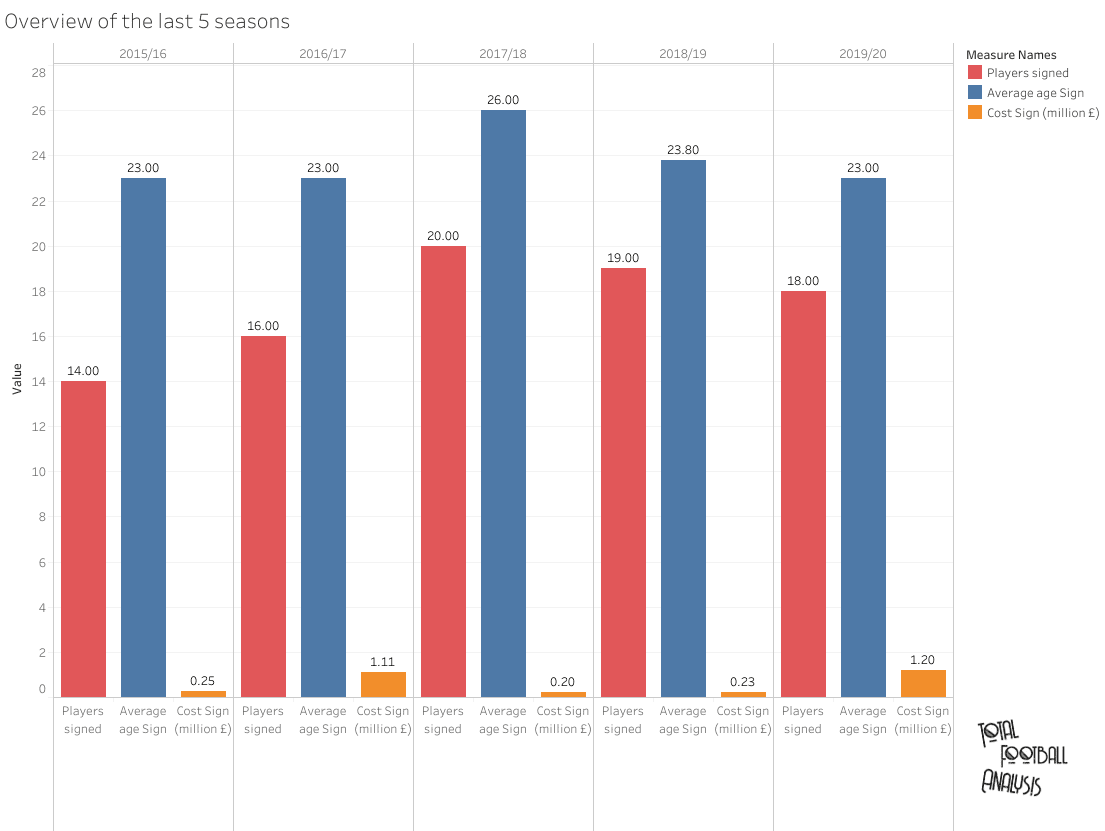
What is constant throughout both formations is simplistic but necessary to Holloway’s style. As highlighted below, this time with a four-man defence, the midfield retains its shape with a deeper holding player to shield in front. This allows for Grimsby to press while retaining cover and balance when narrowing the pitch, forcing the opponent into congested areas.
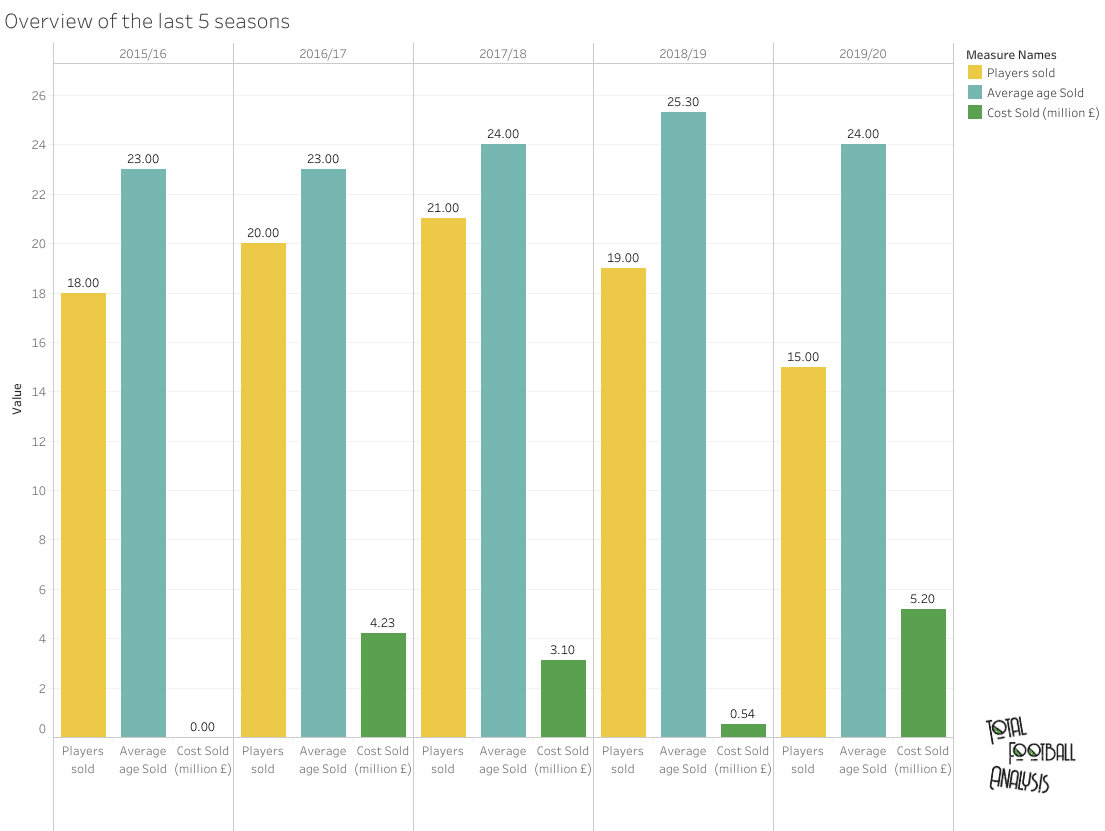
This principle is retained with a three-back system. This time Elliot Hewitt is the holding midfield player creating the balance in the midfield. The slight difference in this instance is the positioning of the wing-back, who starts higher. This requires the midfield to play slightly wider to help cover the gaps in between central defenders when they are forced to cover the wide channels.
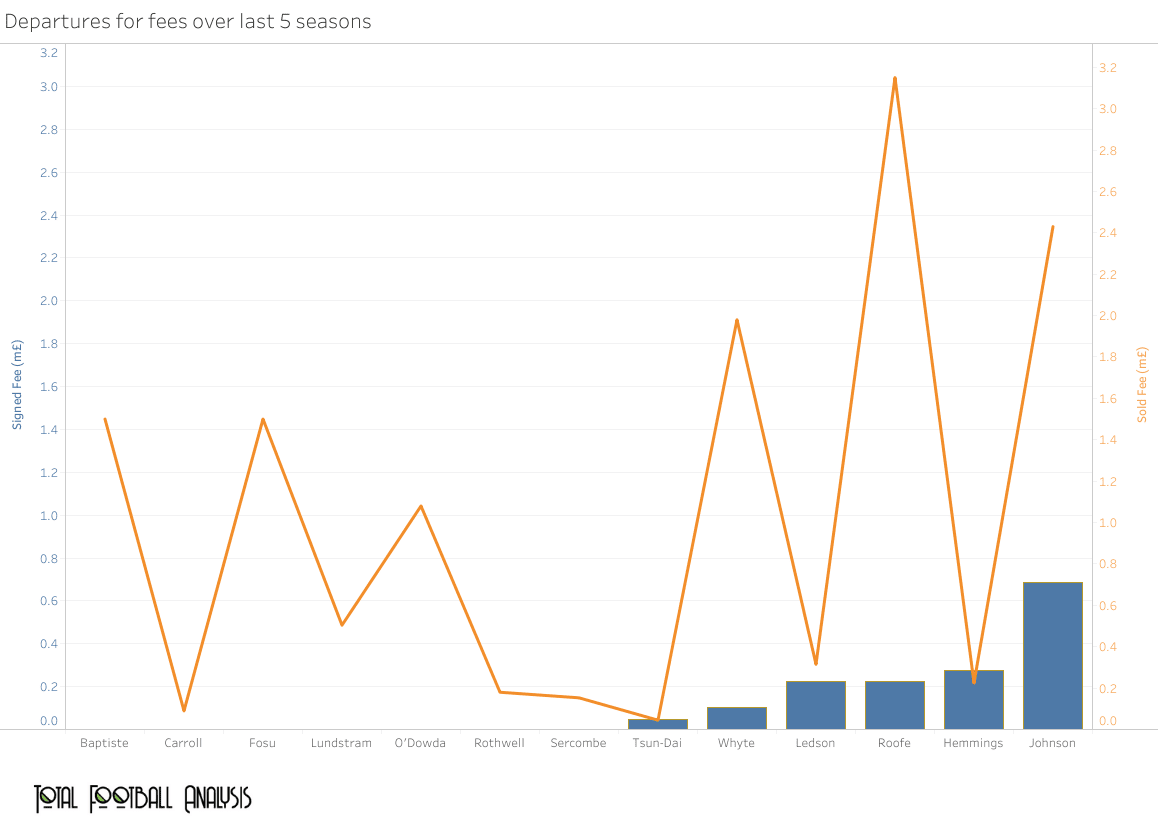
Moving forwards similar principles are mirrored from formation to formation. The use of full-backs/wing-backs are utilized in a similar way in both systems with both providing width to the narrow system as alluded to earlier. In the first example, the full-back can be seen in a wide position with options in-field when operating in a four-back system. Holloway places an emphasis on his full-back to provide width but play diagonal passes inside to players picking up spaces in between lines. This has proven to be consistent throughout with Holloway’s side averaging 13.67 crosses per game compared to 17.27 in the previous regime, a significant drop showcasing the direction Holloway is taking.
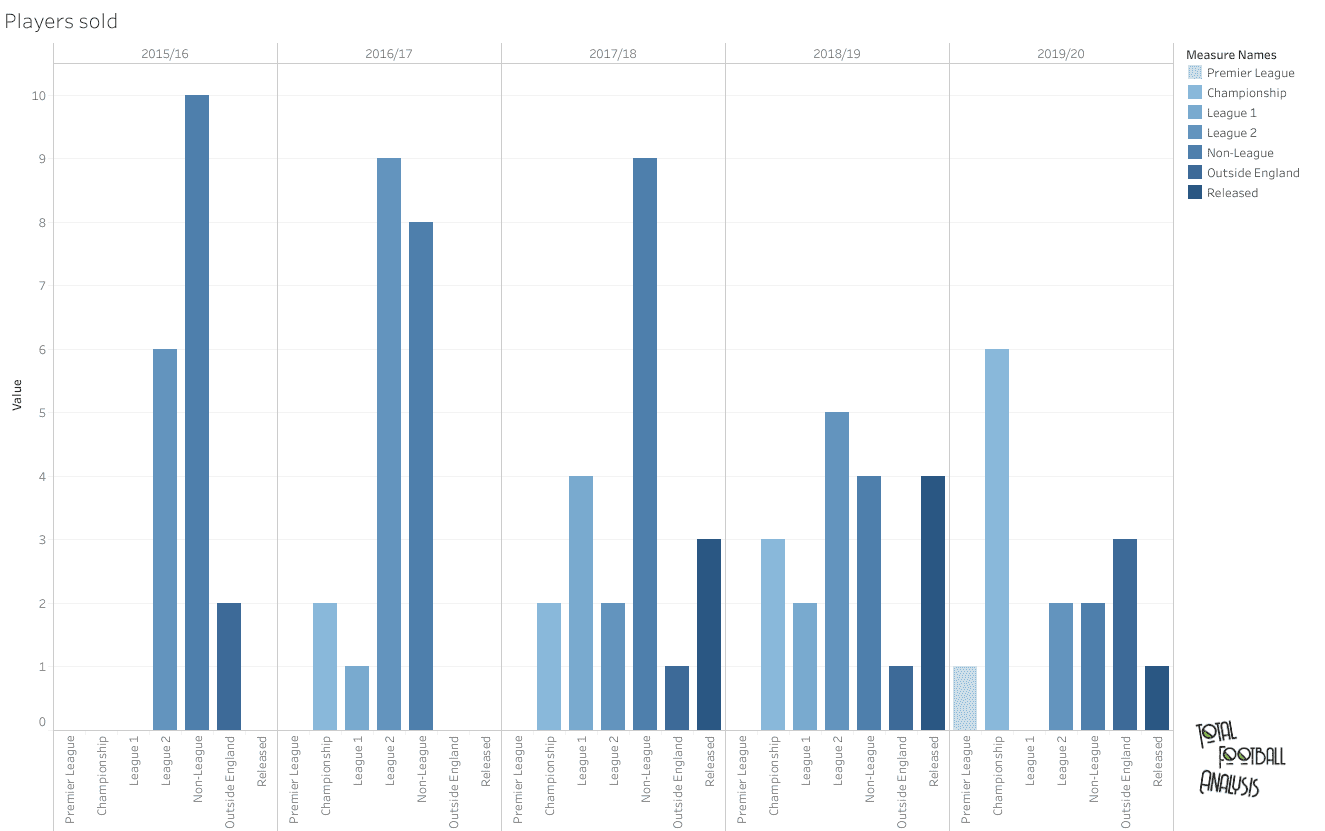
Similarly, this is showcased in this second example, this time in the three-back system. Without the focal point of Hanson, there is a requirement for more fluidity and movement and therefore showcased with a greater emphasis on overloads in wide areas created from rotation. Here a similar position is picked up by the wing-back and he looks for a diagonal pass infield rather than accelerating into a crossing position.
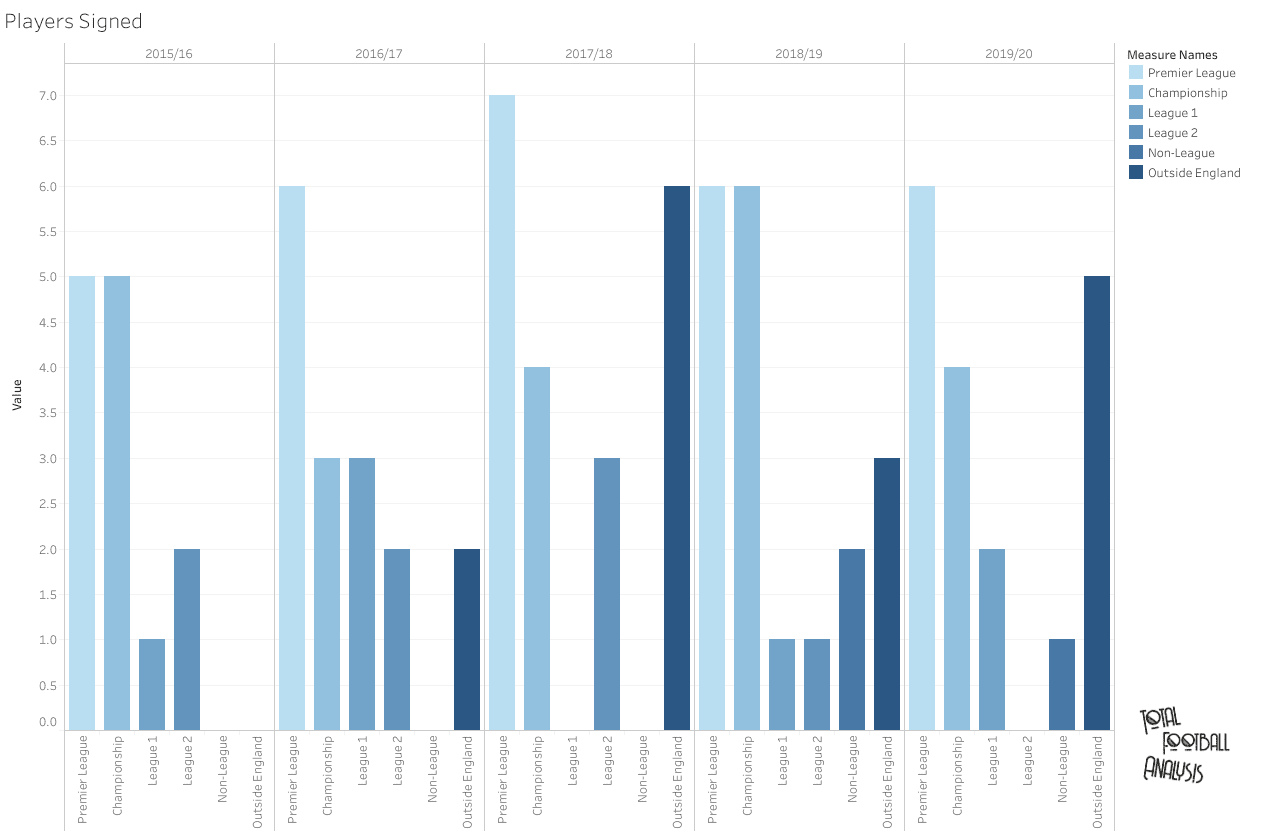
Holloway has shown tactical flexibility while he finds his favoured structure, however, the principles he has applied remain consistent throughout. These concepts although ingrained now differ from what his predecessor applied. Let’s look at how Holloway has changed Grimsby since he took over.
What Holloway changed
So how has Holloway changed Grimsby from before he was appointed? As alluded to, Holloway has encouraged his side to play forward with pace, picking up positions in between lines. In this first example, from Jolley’s final game in charge, Grimsby are seen to force the ball long towards a central striker. The option, however, is available to play a diagonal pass inside to the highlighted player who has the space to turn and play penetrative passes from a higher line. As well as this, the number of options is very limited with a lack of width, giving the player in possession little options.
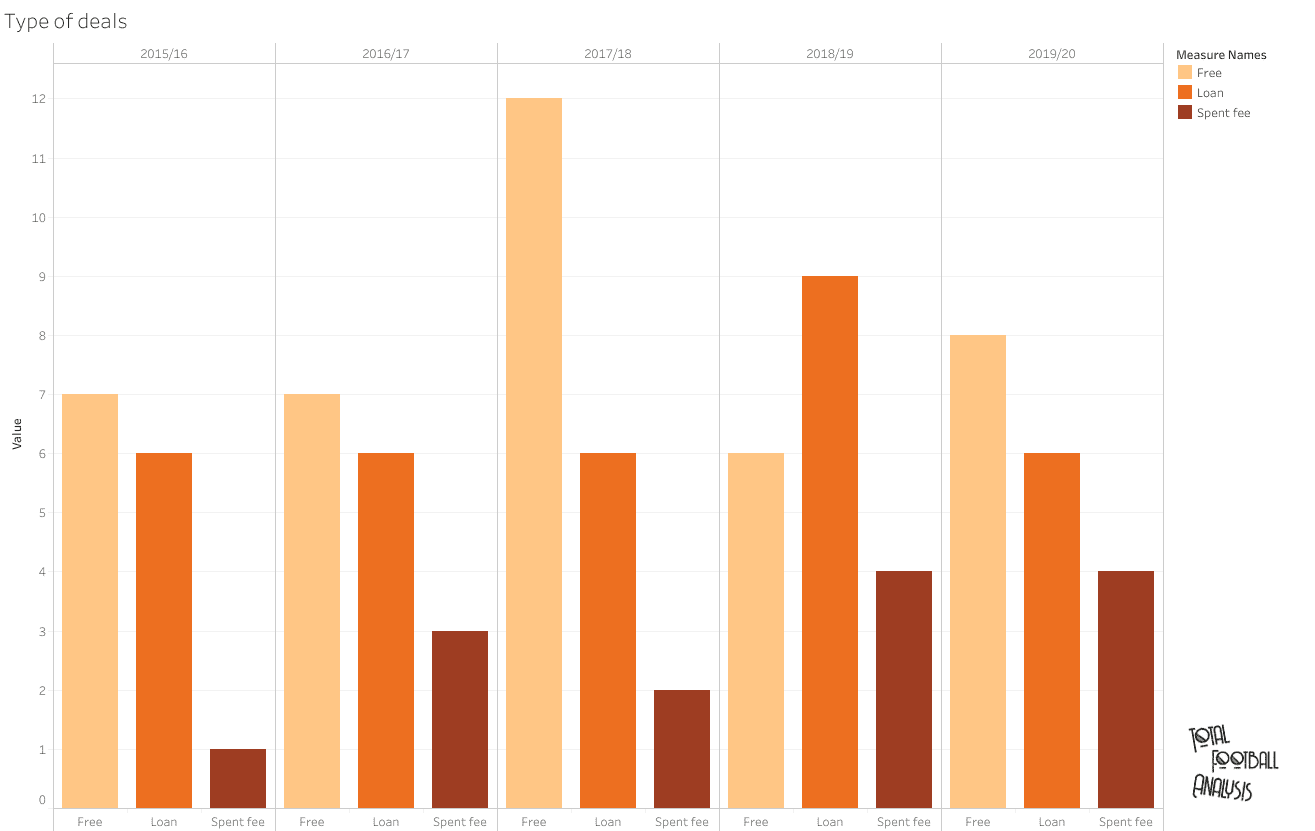
Another example of the lack of utilizing the space in between lines is shown in the example below. As the winger makes a move inside, the options available to him are on the same horizontal line. Looking forwards, any options are also on the same line as each other in positions that make it difficult for them to receive and retain high-quality possession. Where options are needed is in the highlighted area, in between lines. This is an area in which Holloway has developed with his style since arriving, allowing Grimsby to play at a higher tempo with more options for the man in possession.
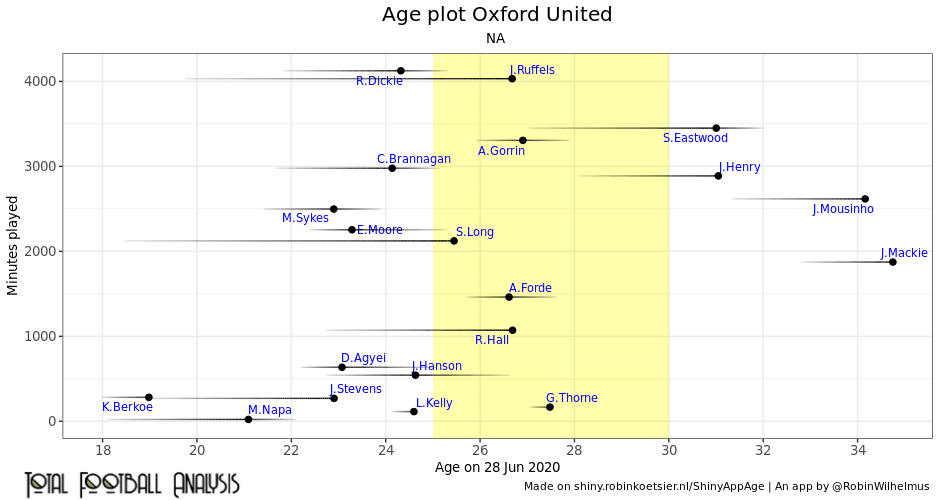
Holloway has encouraged his wide players to operate narrow in the spaces In between lines. This allows the ball to be played into central areas to combine with overloads, while the width is provided high by overlapping full-backs in the outside channels. This also allows for when Grimsby go more direct towards James Hanson, to have more players around the ball to retain quality possession in
penetrative areas.
This can be seen in the example below. Both wingers have picked up a narrow position in between lines. The winger in possession has received a diagonal pass from a full-back in the wide channel. By receiving in this area he is able to attempt to penetrate from a higher line but also tempt opponents out of their defensive shape to create space in behind.
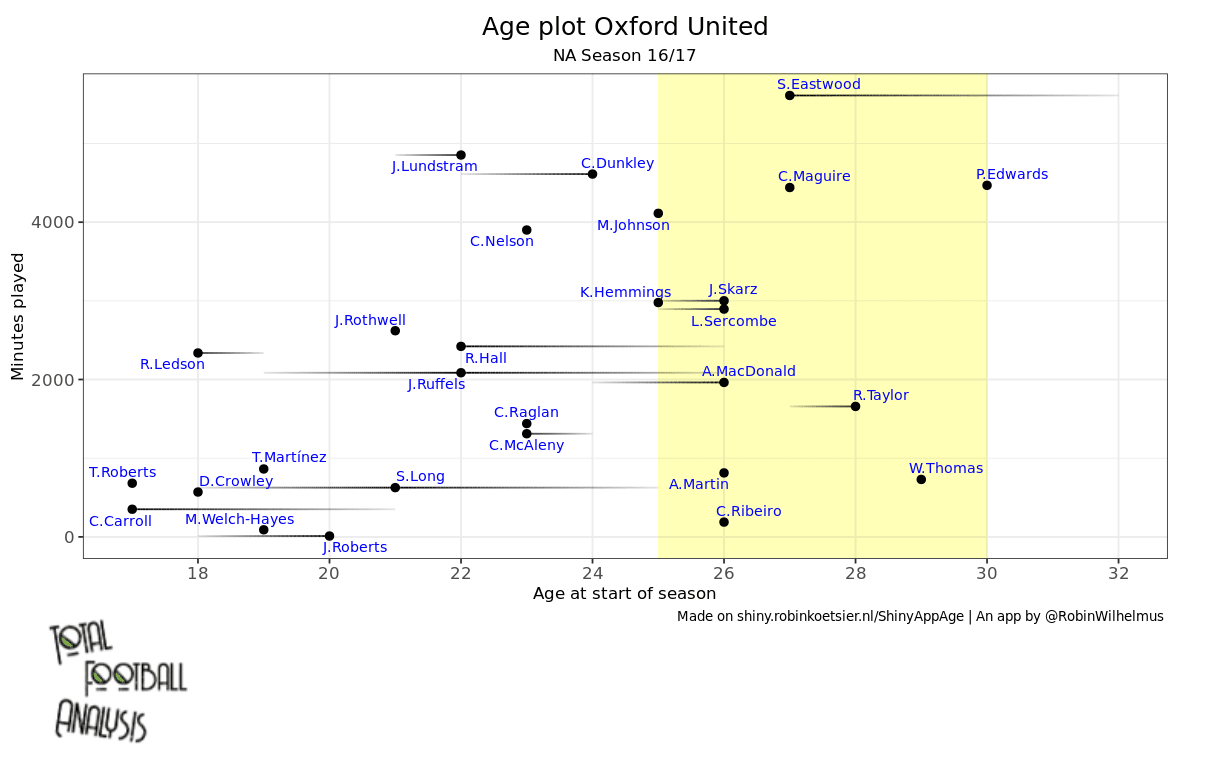
These changes have created a quick-paced attacking system while maintaining simplistic principles in occupying spaces in between lines. Now let’s look at some of these principles in more detail.
Vertical passing and rotations
Holloway has looked to exploit these areas in between lines with the use of triangles and vertical diagonal passing. With an increase to 150.6 forward passes per 90, while also maintaining a higher passes per possession (3.2), Holloway has looked for his side to play forward with a purpose. Holloway has encouraged his team to create triangles throughout the pitch. This allows his side to
give the player in possession at least two options to play forward. While this also allows, with more options, to play at a higher tempo.
By giving players the license to go forward narrowly, it creates numerical overloads in central areas allowing for a greater number of progressive passes. With the full-backs supplying width, the wingers pick up narrow positions where a number of passes can be aimed diagonally infield. Through the concept of rotation, these players are able to receive in the half-spaces to create better chances from a central position.
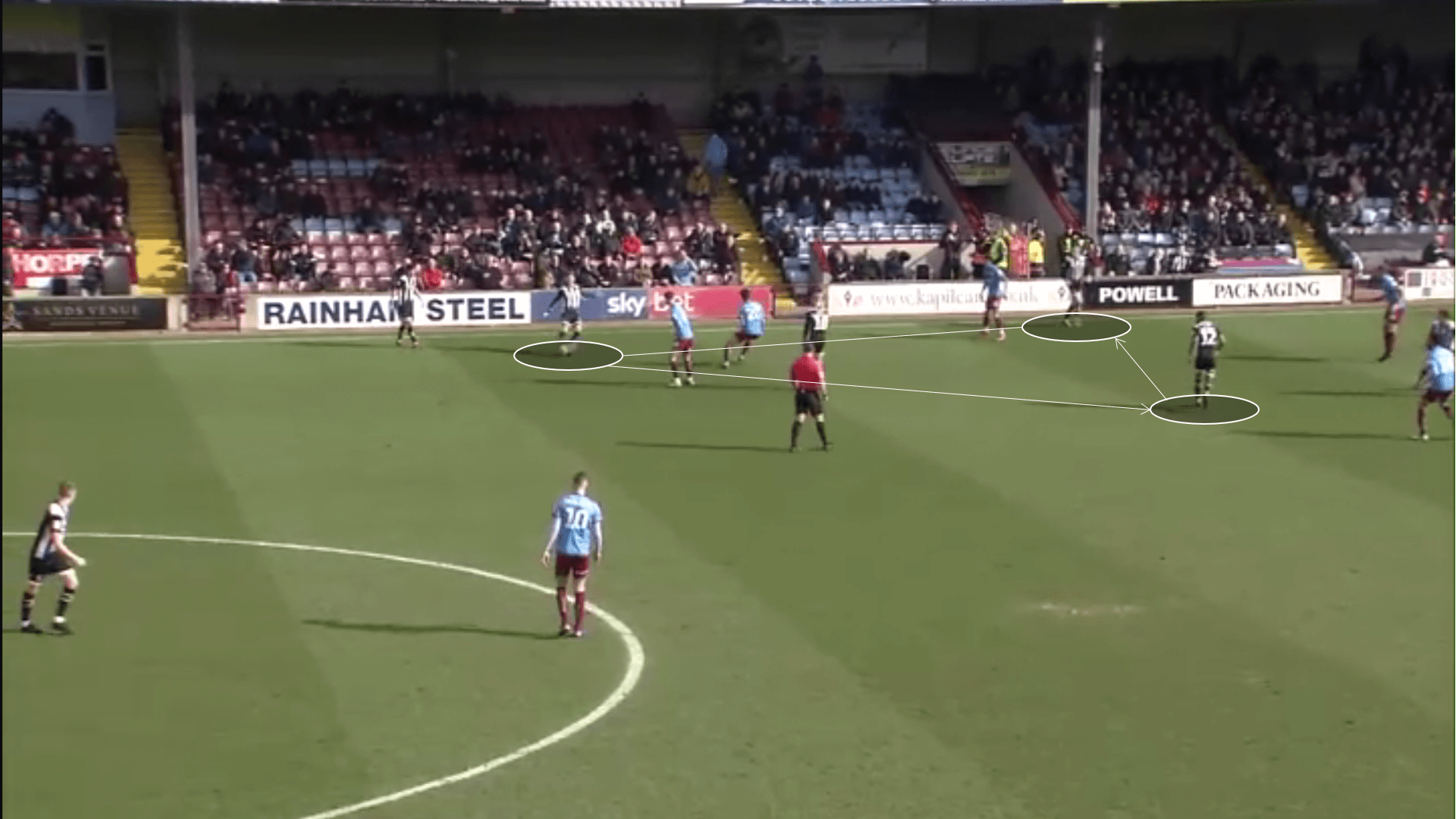
In this first example, we can see a situation where Grimsby have possession in a wide area. As the space develops in front of the defensive line, the midfielder moves into a higher position. He is then in between lines where he can receive diagonal passes from the full-back, while also staying connected to the forward who has made a move into the channel higher in the wider channel. From this, Grimsby can maintain a high tempo with combinations with links to central and wide areas.
This rotation into space allows for vertical passes to apply this key concept from Holloway. This simply means that the ball is not recycled unnecessarily along the defensive line. Instead, there is a focus to play forward. By rotating and encouraging opponents to step out, gives greater diagonal passes into space behind the opposition.
Another example of this concept is shown below. In this example, we see both vertical diagonal passes and rotation together. At first, there is a triangle created with the full-back, outside centre-back, and midfielder. As the pass is made into the full-back in the outside channel, the midfielder has rotated into the space in between lines, moving out of the shadow of the opponent pressing allowing him to freely receive the ball.
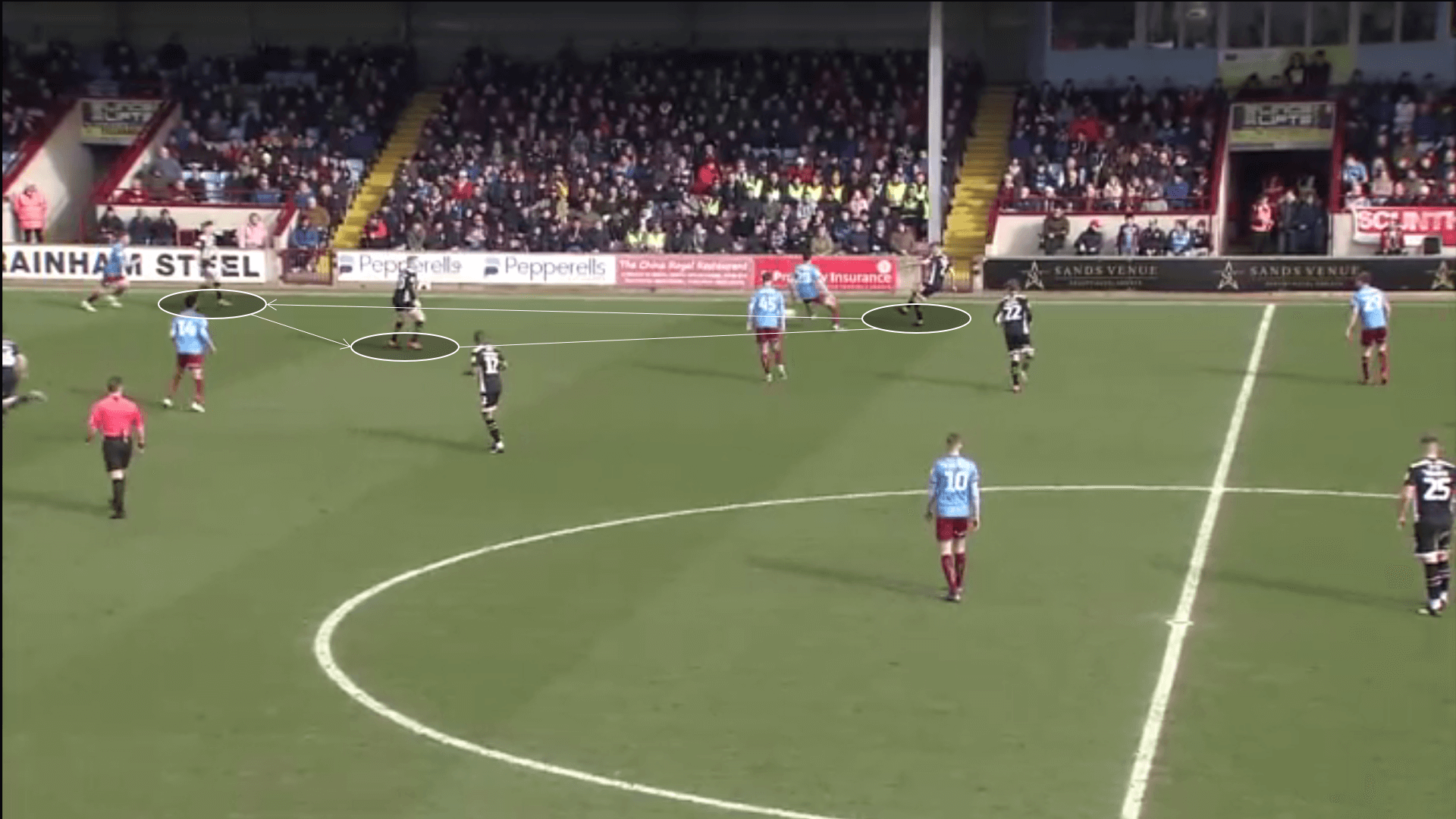
As the ball progresses, a similar move occurs this time with the forward player rotating into a position on a higher line. He can then receive in between lines to lay off for the final receiving midfielder to gain possession in a central position facing forwards. This movement has created opportunities with players better placed leading to 5.47 attacks resulting in a shot.
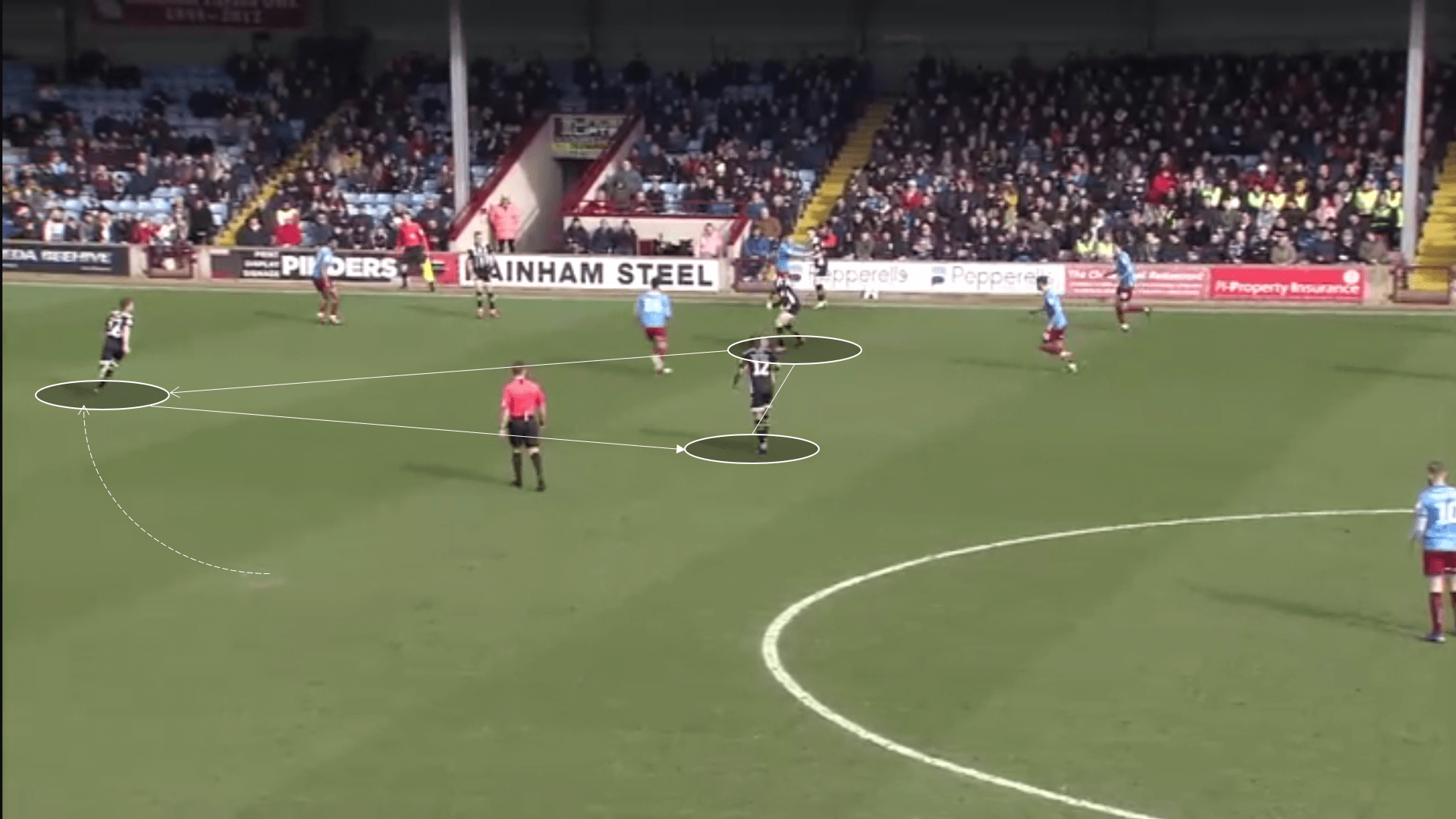
The principle of rotation in both directions is important for Holloway in terms of moving the opponent while also placing dangerous players in advanced positions. Through occupying all five horizontal channels it creates options throughout in between lines to progress at a tempo similar to that of Julian Nagelsmann with RB Leipzig.
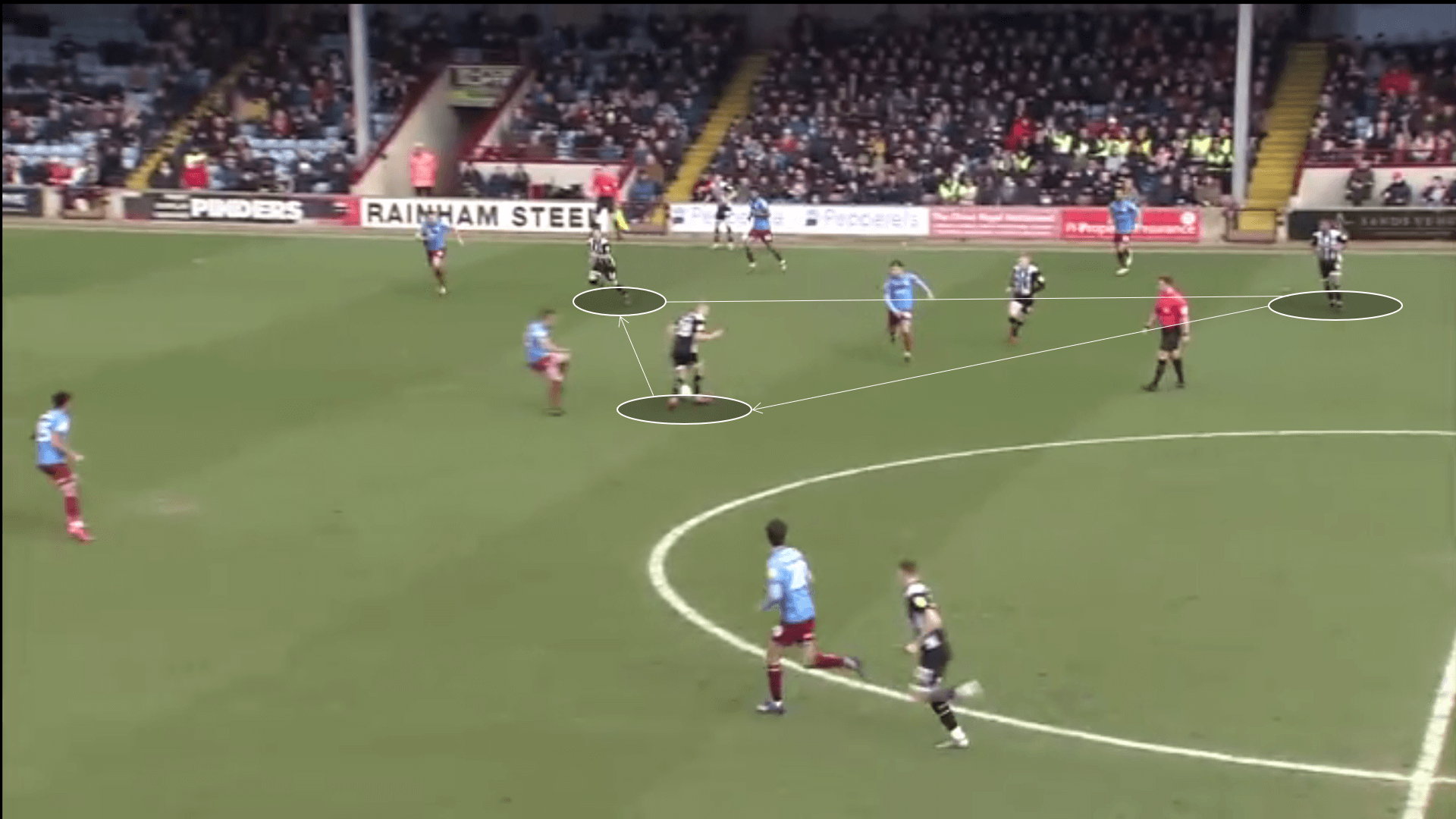
In this final example, vertical passing is seen to bypass the opponent with rotation coming from the outside channel to receive centrally. As the ball is played infield the forward makes this movement to receive at a diagonal angle where he can face forward in possession. With the timing of the movement, he receives on the move to maintain the tempo, bypassing the defensive line.
Intense pressing
Whether setting out in a back four or three the principles around pressing remain due to the transparency of the midfield three. Since Holloway has come in he has encouraged an intense pressing style built around creating traps in central areas. This has been through winning the ball in the central channel, Grimsby has been able to play forward quicker when winning the ball due to their narrow setup.
In any successful press, there must come timing as to when to implement such an intense action. Therefore, there must be cover but also balance to the press with such a high risk, high reward strategy. A strategy that has brought success, with Grimsby reducing the PPDA down to 7.5 on average per game, compared to 10.2 from the Jolley era.
So, how has he applied this? In the first example, a square pass from the opposition triggers a press from the more advanced midfielders. As one presses the other covers the space behind while also being in a position ready to press the receiver. As well as this, the holding midfielder sits in a deeper role to screen penetrative passes to give balance. The importance here is to be staggered. With a flat midfield, it makes it easy to play through. However, with this midfield picking up offset positions it encourages the opposition to attempt to play through into areas which Grimsby can intercept.
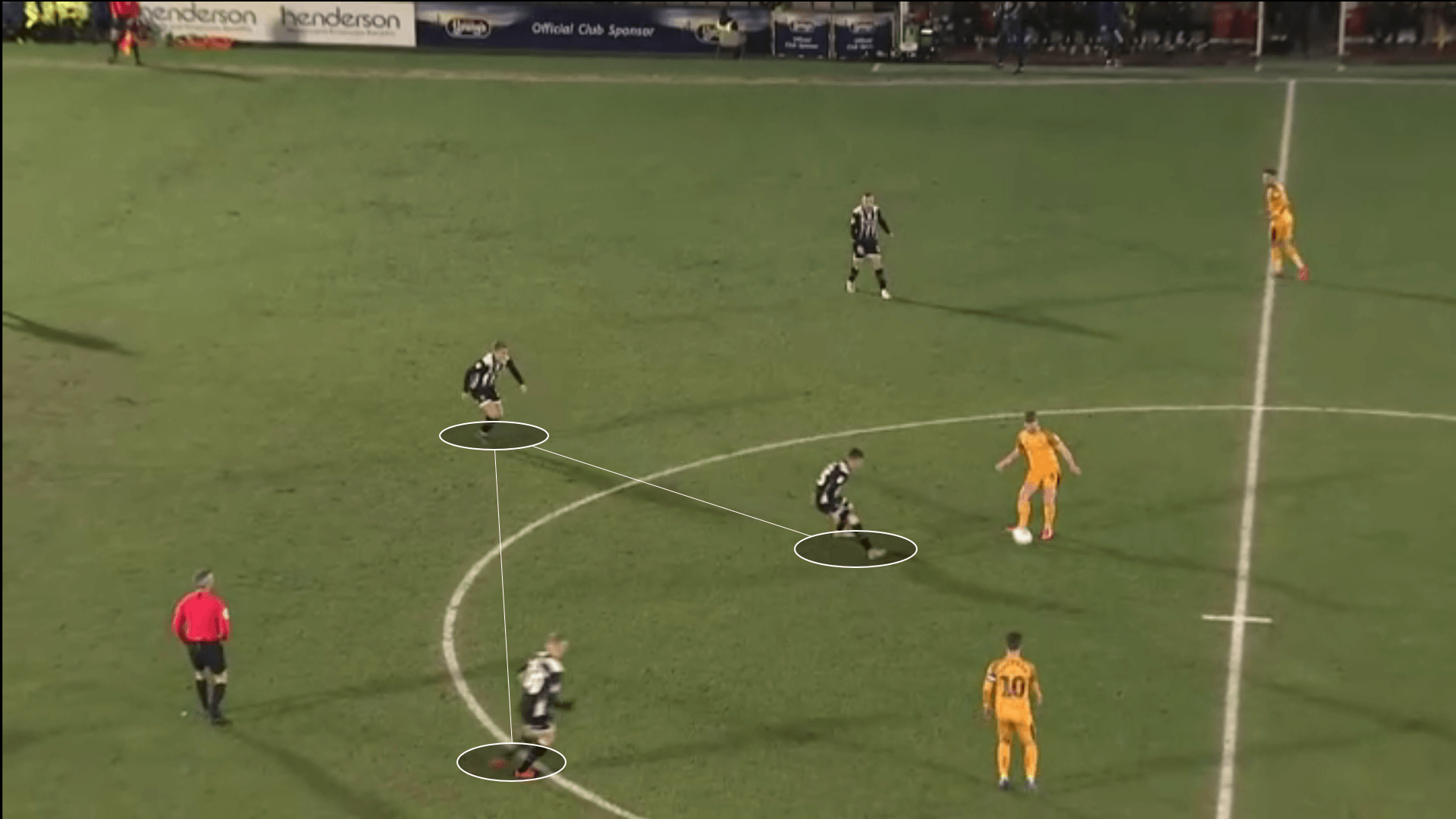
As showcased where the example continues, the pressing player forces the opponent to play quickly which in turn forces a mistake. The player giving balance is then able to move into position and intercept any pass looking for a forward player in between lines. Grimsby has clearly shown this effectively improving their recoveries to 100.4 per 90 minutes. By having this balance in a central area and therefore intercepting it allows Grimsby to transition into their attacking principles quicker. With forward players also picking up a narrow position it allows the first pass from the balance player to be forward and penetrate while the opponent is disorganized.
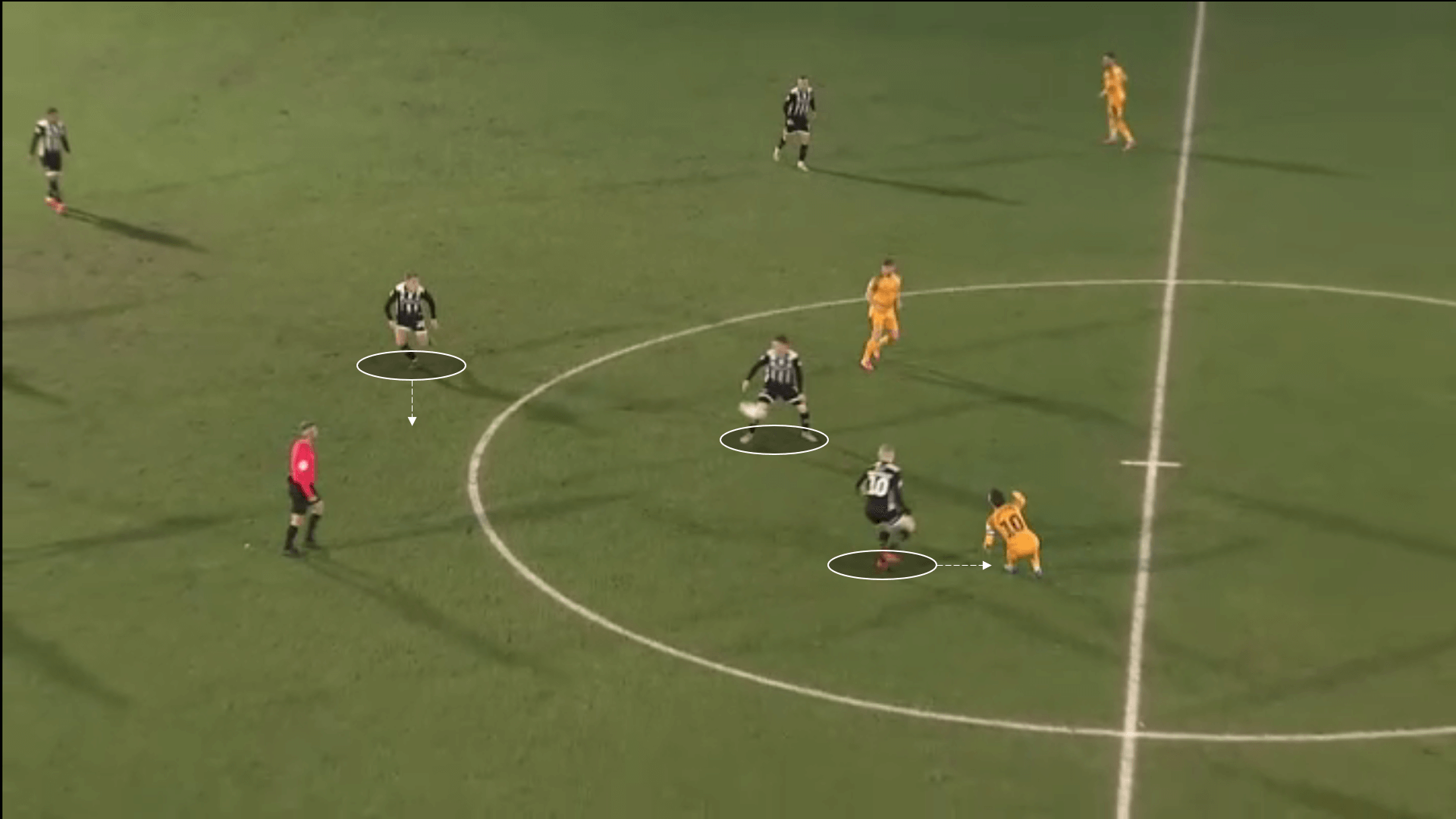
Where Grimsby set this trap up is from the forward players positioning. As shown in the example below, the winger has arched their run to block off any pass into the wide channel. As well as this, he has forced the passer to look centrally for progressive passes. The central midfield players are in a position to press for when the ball goes into the congested area while angling their body position to also encourage towards the central channel. The striker also gives pressure from behind, screening any pass backwards.
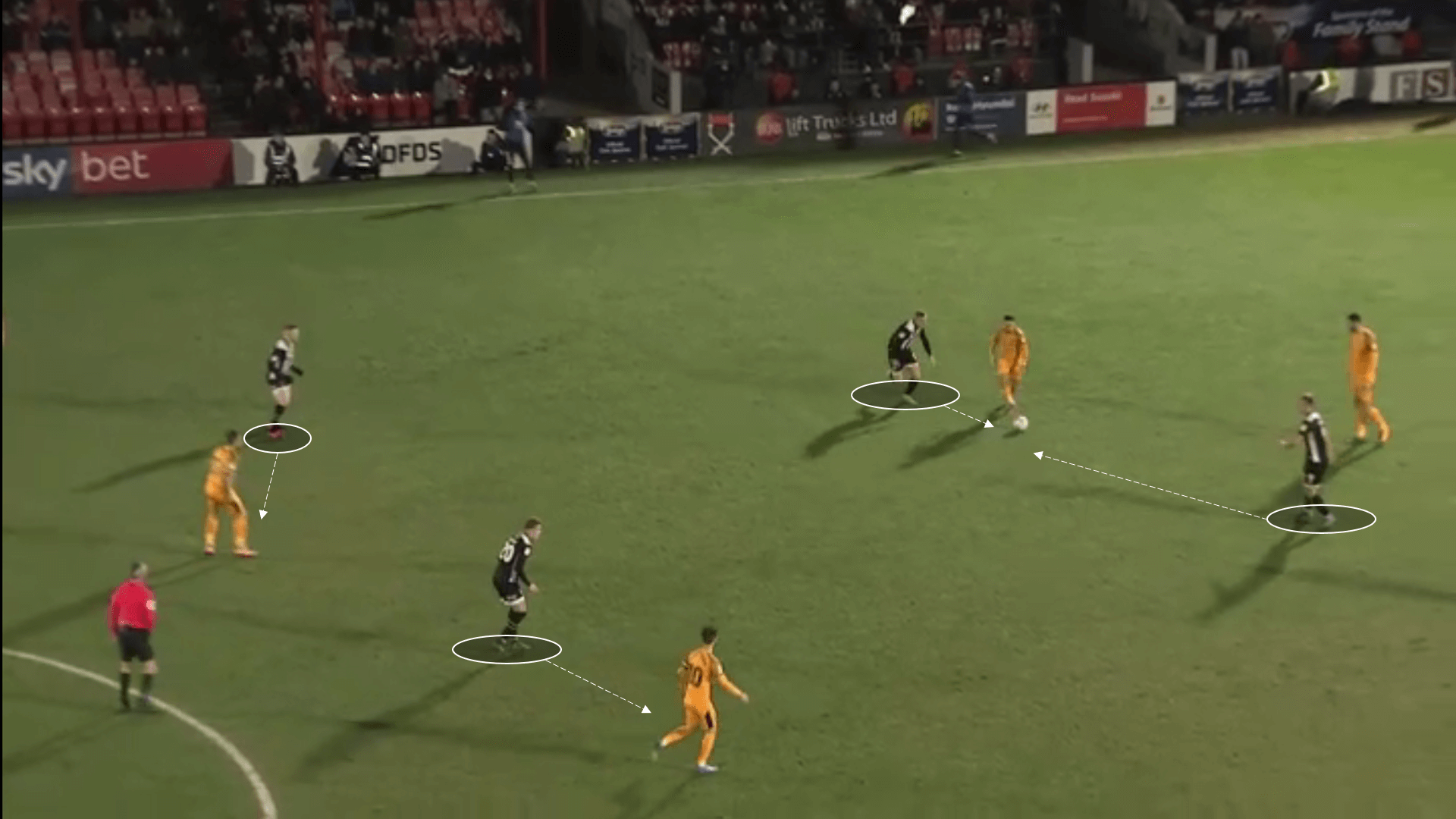
The pass is made into the central channel and Grimsby press with intensity. The holding midfielder steps up in the example below to press from behind. Whereas the advanced midfielders press from the side completing the trap to win back the ball. Executing this with intensity is of the most importance. Winning the ball in a high area allows Grimsby to then combine and penetrate from a higher line.
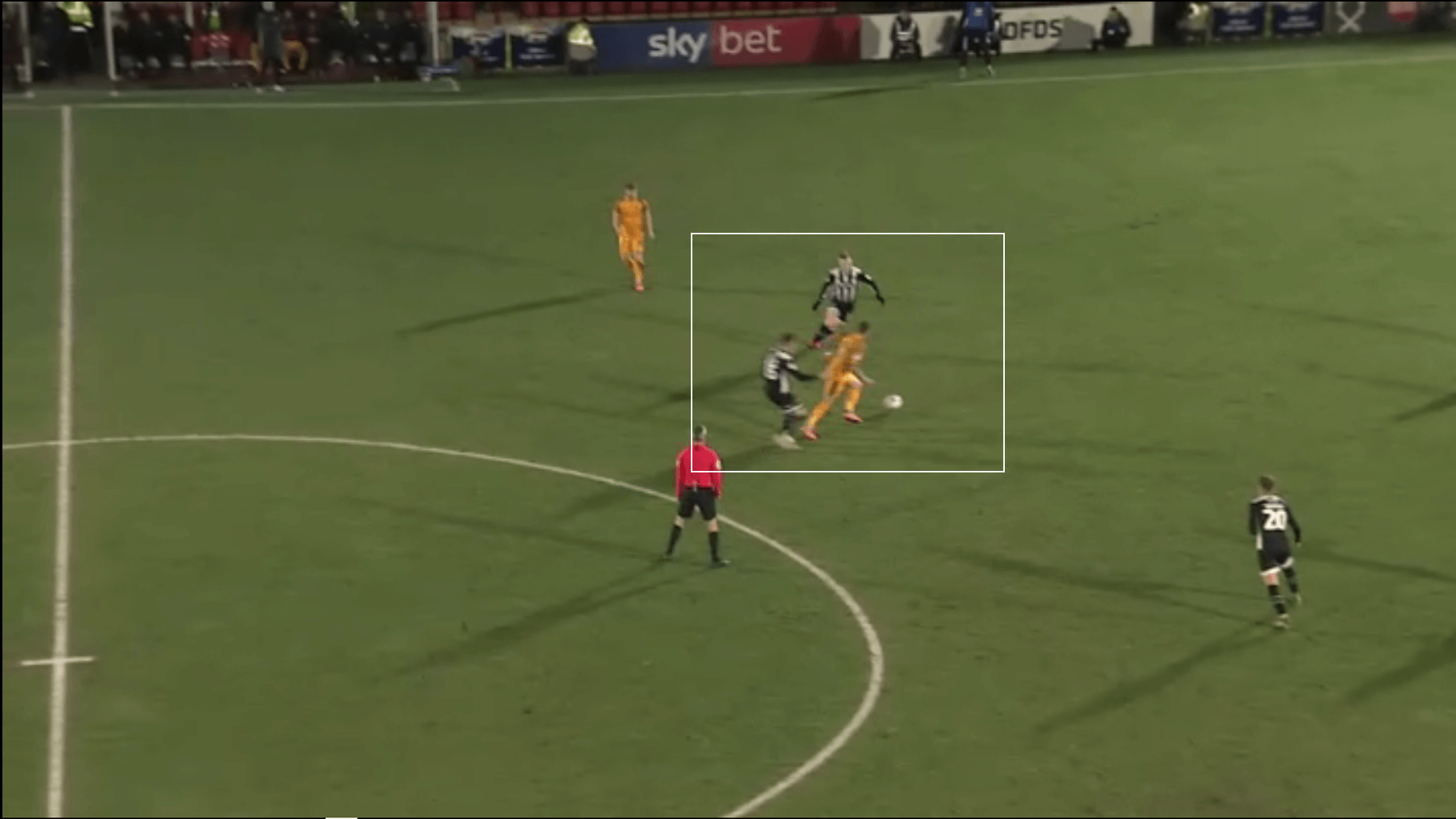
Conclusion
The tactical system favoured by Holloway is not overly complicated but shows clear signs of searching afar for new ideas to apply to his own team. The new manager has clearly seen a bounce with 51% of all of Grimsby’s points coming from his 13 games.
As a manager, Holloway has bought into the club with the hope to galvanise an area. There is little doubt that his achievements will be highlighted as much as his lows during his tenure. However, from his previous successes, there are few who would bet against him replicating such achievements.






Comments